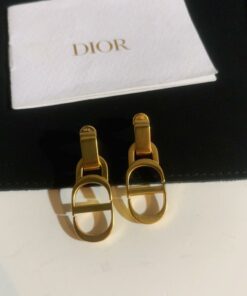After Lasik eye surgery to correct your vision, many people wonder whether they can continue wearing their colored contact lenses again. After all, these colored contacts are more than just a fashion accessory for them; they are also a subtle way to get back the old you while helping you cope with the new you in the post-LASIK world. However, many assume that one can no longer wear colored contact lenses after Lasik eyesight correction. That’s because, in general, most doctors will advise their patients against wearing colored contact lenses after Lasik surgery. It is because of risk factors and complications that might arise from such activities. But not all hope is lost! We’ll let you know if and when it is safe to resume wearing those excellent colored contacts after Lasik surgery.
What is Lasik Eye Surgery?
Lasik eye surgery is surgical, popularly known as laser-assisted in situ keratomileuses. The surgery treats both nearsightedness and farsightedness. It is done by reshaping the cornea. The cornea is the transparent protective layer on the front of your eye, responsible for focusing light. LASIK eye surgery can alter how light is bent as it enters your eye. It helps in allowing you to see things more clearly. They do this by using a laser to reshape your cornea.
LASIK is one of the most popular laser eye surgery procedures that correct long-, medium-and nearsightedness and astigmatism. The surgery is a refractive surgery that modifies the cornea using a laser or microkeratome. The purpose of LASIK is to enhance visual acuity. Aside from the standard contact lenses and eyeglasses, LASIK may be a lifelong solution for many. The same procedure is used to treat myopia, hyperopia, and astigmatism. Lasik and LASER are similar to PRK, a surgical process that reshapes the cornea. A phakic intraocular lens is a treatment option for patients who do not qualify for LASIK. In 2018, there were more than 40 million LASIK procedures worldwide.
Is it safe to wear contact lenses that are colored after Lasik surgery?
The short answer is that it’s not a very safe option, but not entirely unsafe either. When you undergo Lasik eye surgery, the procedure permanently changes the structure of your cornea, along with the shape of your eye. It means that your eye is now a slightly different shape than before. Colored contacts will not fit the new contours of your eye the way they used to. Because of this, colored contacts can become a bit of a problem if you wear them after Lasik surgery.
Colored contacts are meant to fit the contours of your eye perfectly; if the fit is off, there’s a chance that the colored contact lenses can slip out of place. It can cause lots of complications. Because of this, most eye doctors will advise their patients against wearing colored contact lenses after Lasik surgery.
How long should you wait to wear the contact lenses?
It is good to wait two to three months after LASIK surgery. It ensures that the eye has adequately healed and that the colored contact lens will not damage it. LASER surgery requires about one month of waiting time. There are several kinds of laser eye surgery, so the waiting times may differ. In LASIK surgery, a thin corneal flap is produced, while cells are displaced from the surface layer in LASER. While laser surgery may alter the curvature of the lens, making it more challenging to fit appropriately, colored and clear lenses are utilized after LASIK. It is critical to have contact lenses adequately fitted to preserve corneal health.
Risk Factors When Wearing Coloured Contacts After Lasik Surgery
There are both short-term and long-term reasons why colored contacts after Lasik surgery aren’t a great idea. First, the LASIK surgery will cause changes in your corneal shape, which is the same thing that colored contact lenses do every day. If your eyes are already experiencing slight differences in shape due to LASIK surgery, colored contacts can make these changes worse. Colored contacts flatten your cornea, which can worsen the quality of your vision. Colored contacts can also change the shape of your iris, which affects how much light enters your eye and how your pupil reacts to light.

 Dior CD Disc-shaped Earrings 2023 Vintage Style for Women
Dior CD Disc-shaped Earrings 2023 Vintage Style for Women  Chanel earrings, CC earrings adorned with pearls v41
Chanel earrings, CC earrings adorned with pearls v41  Chanel earrings, CC dangle earrings in water drop shape adorned with stones and pearls v39
Chanel earrings, CC dangle earrings in water drop shape adorned with stones and pearls v39 